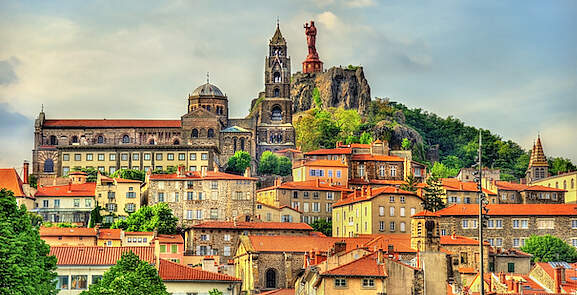
In 1850, the bishop of Le Puy-en-Velay (southern France) launched the project for the installation of a monumental statue of the Virgin Mary on Mount Anis, above the basilica of Le Puy. In 1853, a competition was launched in which 53 artists participated. At the same time, a subscription was launched throughout France.
The 300,000 Brothers of the Christian Schools raised the sum necessary to build the pedestal. For his part, Emperor Napoleon III offered cannons taken from the Russian army during the Crimean War.
In 1859, the different elements of the statue were melted down in Givors (Rhône) and transported to Le Puy. The official inauguration took place on September 12, 1860, in the presence of 120,000 people and 12 bishops.
Since then, the statue of Notre-Dame de France is an integral part of the image of the city of Le Puy-en-Velay. Tourists and pilgrims climb the path and the steps that lead to the foot of the statue.
The statue of Notre-Dame de France expresses first and foremost the confidence of the Catholics of France in the Virgin Mary. For Catholics, Mary is the one who shows the availability of the heart to welcome God in one's life and to then give him to the world. She is therefore a model for all.
The statue was made by casting cannons. Instruments of death became a statue evoking peace and reconciliation. The recycling of the cannons of the Russian army (1) was, at the beginning, a way to recuperate raw material for the making of the statue at a lower cost. But in doing so, the statue of Notre Dame de France seems to echo Isaiah's prophecy in the Bible:
"From their swords they will forge plowshares and from their spears pruning hooks; one nation will not raise the sword against another nation and war will no longer be learned" (Isaiah, 2:4)
(1) it is made of the metal of over two hundred pieces of artillery, captured by the French at Sevastopol in the Crimean War. It is about 16 meters tall and weighs about 10 tons.